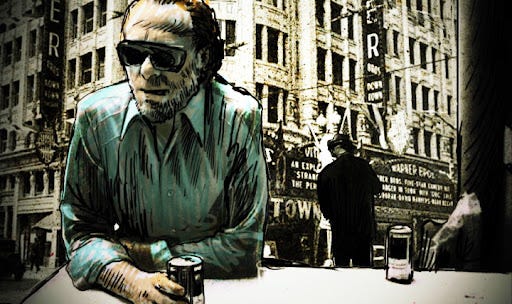The story of Charles Bukowski’s transformation into an artist unfolds like a hymn to the defiant spirit. It has all the familiar themes of a literary outlaw: booze, poverty, rage, and tumultuous love. Yet, at its core lies an unwavering devotion to the written word—a quiet, enduring flame amidst the chaos of his existence.
Through the long years of obscurity, Bukowski toiled steadily in shadowed rooms, crafting his art with no promise of recognition. His dreaded fame, as if summoned by fate itself, arrived only in the later chapters of his turbulent life, a testament to the slow, relentless rhythm of his resolve.
In his roaring younger years, he was an aloof bum living on shit jobs and wits.
He worked in slaughterhouses, dog biscuit factories, bloodbanks in Frisco, and hung posters in New York subways. He was a shipping clerk, a truck driver, a mail clerk, a newspaper errand boy in New Orleans, and a “holder down of barstools throughout a dull alarmclock nation, supported by shackjob whores.”
"I remembered my New Orleans days, living on two five-cent candy bars a day for weeks at a time in order to have leisure to write."




